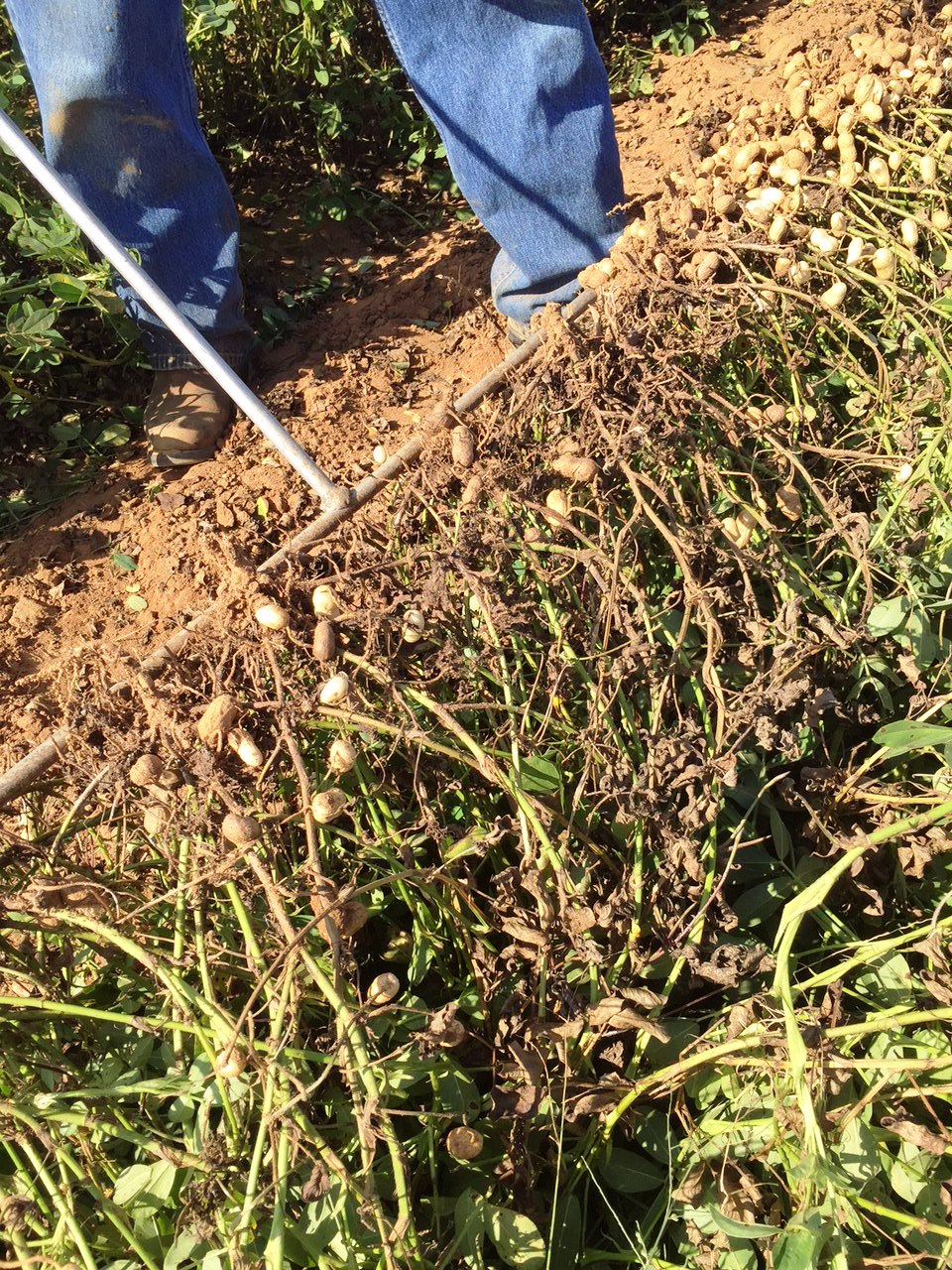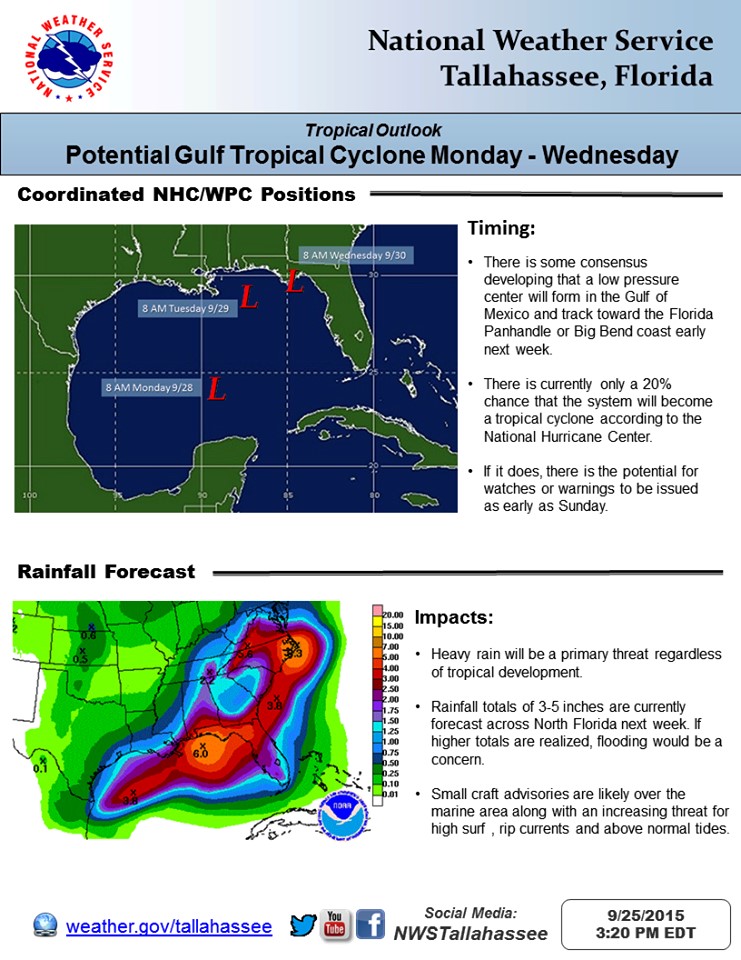
UF/IFAS Peanut fungicide trial untreated plots showing 50% White Mold Infestation. Photo by John Atkins
Peanut harvest is in full swing in the Florida Panhandle, but producers have had challenges to crop success in the form of disease and erratic weather this year.
White mold has been particularly troublesome this season. On August 24th we dug and rated our University of Florida, IFAS peanut fungicide comparison plots here in Jay Florida, and some of the untreated plots had as much as 50% white mold. Much of the high white mold levels were driven by the extremely warm temperatures we had this year coupled with the fact that many fields were planted peanuts behind peanuts.
In addition to high levels of white mold being influenced by the weather, the 2015 growing season in Santa Rosa County was hit or miss as far as rain events go. I don’t mean miss the rain one week and make up for it the next; all season long, many areas either got rain, or they did not. The decision to get the first peanuts out of fields was not based on maturity or a profile board, it was based on salvaging what they had before the plants died. Yields in these fields ranged 1,000 – 1,300 pounds per acre with a lot of seg 2’s and 3’s. Some fields in the dry areas were only harvested for forage.
Peanuts coming out of fields that were fortunate enough to receive rainfall, and did not remain for weeks in a wilted state, are yielding 2,500 – 4,500 pounds per acre. I know of one field that appeared to have never wilted that yielded 6,000 pounds per acre. One grower stated that his average farm yield was bumping 6,000 pounds per acre in 2014, but this year he is hopeful to be reach the 3,000 – 3,500 pound per acre range.
In reference to the weather what can we do?
Many of you remember the days of making it a point to be in front of the television at 5:00 pm to make sure you received an update of the weather forecast to aid in decision making, and cartoons only came on Saturday mornings. (Boy those were the good ole days!). These days we can get weather updates on our phones throughout the day. But just in case you missed this: [notice]The National Weather Service in Tallahassee Florida has issued a weather bulletin describing potential heavy rains next week from a low pressure developing in the Gulf of Mexico. Producers should pay close attention, as these conditions may affect cotton and peanut harvest conditions over the next week. [/notice]
Weather forecasters are also reporting that we are entering into one of the strongest El Niño phases since the mid 1980’s. Because of the intensity of this developing El Nino, forecasters are predicting that we are going to have a late, wet, and cooler fall and winter. What does this mean for our crops, and what are some important considerations we need to start thinking about now? We need to be timely in our harvest and we need to make sure we establish crops in a timely fashion. Anticipate that if it remains cooler and wetter next spring, we may have increased problems with seedling diseases in our cotton. Will we be able to get into the fields in a timely manner? Will our corn planting be timely with what we are doing?
Growers need to pay special attention to this year’s crops and make notes on various disease issues. Pay attention to the amount of white mold you had along with other diseases. Rely on extension service researched based non-biased recommendations to aid in management decisions for the 2016 crop year.
For more information, please see the following resource:
Super El Nino Poised to Disrupt Weather Patterns
Authors Note: This article was compiled from information from grower input, and from Dr. Bob Kemerait, UGA Extension Pathologist.
- 54th Annual Santa Rosa County Farm Tour Goes Virtual - December 11, 2020
- Video Tour of the 2020 Santa Rosa County Peanut Variety Trial - October 9, 2020
- Giant Salvinia – A Highly Invasive Aquatic Plant You Don’t Want Growing in Your Pond - May 29, 2020

